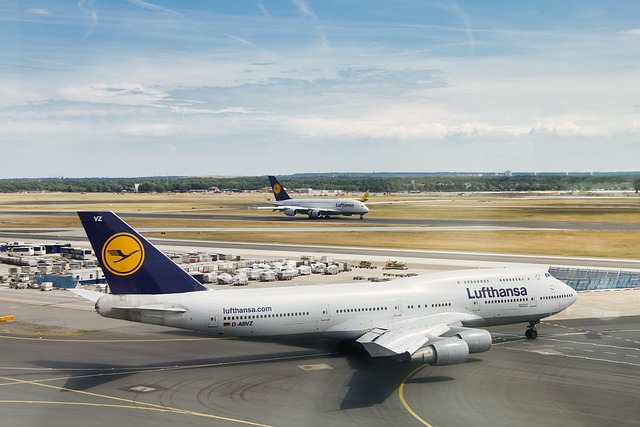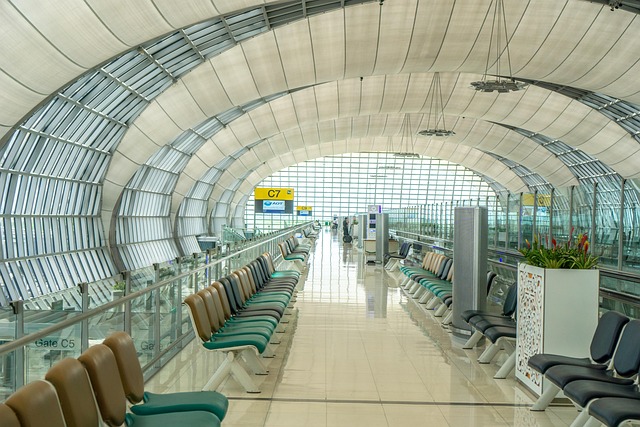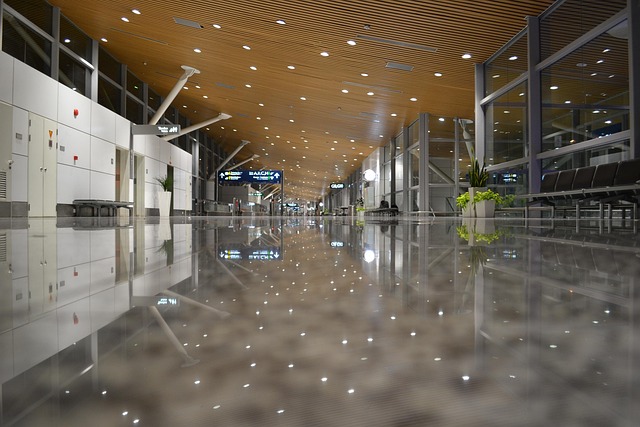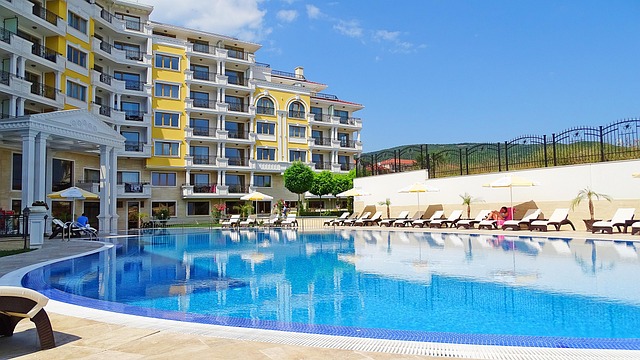Top Schools Near Albany Airport: Apartment Living Guide

Apartment complexes near Albany International Airport offer a unique blend of top-rated schools and modern living. With easy access to education, gree…….
In the dynamic landscape of urban real estate, apartment complexes play a pivotal role in catering to the housing needs of modern societies. Among these, the focus shifts to those located strategically near major transportation hubs, such as airports. This article delves into the intricacies of apartment complexes situated in proximity to Albany International Airport, exploring their significance, global impact, economic implications, technological innovations, regulatory framework, challenges, and future trajectory. By examining these aspects, we aim to provide a comprehensive understanding of this unique real estate segment and its role in shaping urban environments.
Apartment complexes near Albany International Airport refer to multi-dwelling residential structures located within a specified distance from the airport, typically offering a range of amenities and services tailored to both residents and air travelers. These complexes encompass various housing types, including studio apartments, one-bedroom units, and larger family apartments, often designed to accommodate diverse demographics.
Key components that define these apartment complexes include:
Proximity to the Airport: Located within a few kilometers of Albany International Airport, ensuring easy accessibility for both residents and airport visitors.
Transportation Infrastructure: Efficient public transportation connections, such as bus routes or shuttle services, facilitate commuting between the airport and the apartment complex.
Amenities: Common amenities may include on-site parking, fitness centers, swimming pools, laundry facilities, and community spaces that cater to residents’ recreational needs. Some complexes also offer business centers, co-working spaces, or conference facilities to accommodate remote workers or travelers in need of a quiet workspace.
Target Demographics: These apartments appeal to a diverse range of individuals, including young professionals, students, families, and frequent business travelers, each with distinct housing preferences and requirements.
The concept of apartment complexes near airports is not new, but its popularity has surged in recent decades due to several factors. Historically, these developments emerged as a solution to the growing demand for affordable and convenient housing options for workers and families relocating to areas with significant transportation hubs.
In the context of Albany International Airport, the construction of such complexes has been driven by:
Economic Growth: The airport’s strategic location has attracted businesses and industries, leading to an influx of workers seeking convenient and affordable housing.
Tourism Industry: Albany, with its rich cultural heritage and natural attractions, benefits from a thriving tourism sector. Apartment complexes cater to tourists staying at the airport or in nearby areas, providing them with comfortable accommodations during their visit.
Urbanization and Mobility: The trend towards urban living and increased mobility has prompted developers to create mixed-use developments that seamlessly blend residential spaces with transportation infrastructure.
These apartment complexes contribute significantly to the local housing market, offering a balance between suburban comfort and urban convenience, especially for individuals with mobile lifestyles.
The phenomenon of airport-adjacent apartment complexes is not limited to Albany; it has gained global recognition as an innovative approach to addressing housing needs in rapidly growing cities. Several international trends shape the development and evolution of this real estate segment:
Urban Renewal: Many cities worldwide are revitalizing underutilized airport areas, integrating residential, commercial, and recreational spaces to create vibrant urban centers around their airports. Amsterdam’s Schiphol Airport and Singapore Changi Airport are renowned for their successful mixed-use developments.
Sustainable Living: There is a growing emphasis on environmentally conscious design and construction practices. Developers are incorporating green features such as energy-efficient appliances, solar panels, and eco-friendly materials to appeal to eco-conscious residents.
Smart Homes and Technology Integration: The Internet of Things (IoT) revolution has led to the integration of smart home technologies in apartment complexes. Residents can control lighting, temperature, security systems, and appliances remotely, enhancing convenience and energy efficiency.
North America: Cities like New York, Los Angeles, and Toronto have seen a surge in airport-adjacent housing developments, catering to the needs of diverse populations, from young professionals to international students.
Europe: London, Paris, and Berlin have embraced similar concepts, often integrating cultural and recreational facilities within these complexes to foster community engagement.
Asia Pacific: Cities like Tokyo, Sydney, and Melbourne are known for their well-planned airport-centric developments, ensuring seamless connectivity between housing, transportation, and commercial hubs.
Unique challenges vary across regions. For example, dense urban areas might face stricter zoning regulations, while remote locations could struggle with infrastructure development and maintaining amenities that attract a diverse resident base.
The economic aspects of apartment complexes near Albany International Airport are multifaceted, influencing both the local and regional markets.
Demand-Supply Balance: The availability of such apartments is closely tied to local employment opportunities and tourist influx. A balanced supply ensures that these properties remain in high demand, allowing developers to command premium prices.
Rental Yield: Rental rates for these complexes often surpass traditional apartment buildings due to their prime location and convenience. This makes them attractive investments for property managers and owners.
Institutional Investors: Pension funds, real estate investment trusts (REITs), and sovereign wealth funds frequently invest in airport-adjacent properties due to their steady income generation and long-term appreciation potential.
Private Equity and Developers: Smaller-scale developers and private equity firms also participate, targeting areas with high growth potential and strong transportation connectivity.
These apartment complexes stimulate local economies in several ways:
Job Creation: Construction and management of these developments create short-term employment opportunities, while maintenance, retail, and hospitality sectors benefit from long-term job prospects.
Business Growth: The presence of such housing complexes attracts businesses catering to residents’ needs, fostering a vibrant local economy.
Tourism Boost: By providing convenient accommodations, these apartments indirectly contribute to the tourism industry, encouraging visitors to explore the city and its attractions.
Technology plays a transformative role in shaping the future of apartment complexes near airports, offering both opportunities and challenges.
Smart Buildings: Advanced automation systems enable efficient energy management, lighting control, and security monitoring. These features enhance resident comfort and reduce operational costs.
High-Speed Internet and Connectivity: Fiber-optic networks and 5G connectivity are essential for modern apartment complexes, providing residents with reliable, high-speed internet access, crucial for remote work and entertainment.
Mobile Applications: Dedicated apps offer residents a platform to communicate with property managers, request maintenance, pay rent, and access community amenities, enhancing overall living experiences.
Enhanced Security: Advanced security systems, including facial recognition and biometric access control, provide residents with peace of mind and improved safety measures.
Personalized Experiences: Utilizing data analytics, property managers can tailor services and amenities to individual preferences, creating a unique living environment.
Remote Management: Technologically advanced complexes allow for remote monitoring and management, enabling efficient maintenance and quick response times to resident requests.
The development and operation of apartment complexes near Albany International Airport are subject to various policies and regulations, ensuring safety, sustainability, and fair housing practices.
Zoning and Land Use Regulations: Local governments dictate land use planning, specifying permitted zoning for airport-adjacent areas. These regulations control the density, height, and type of structures allowed.
Building Codes and Safety Standards: Stricter building codes and safety standards are enforced to ensure structural integrity, fire safety, and accessibility requirements.
Environmental Protection: Policies aimed at minimizing environmental impact include guidelines for sustainable construction practices, waste management, and noise pollution control.
Housing Laws: Fair housing laws protect residents’ rights, ensuring equal access to housing regardless of race, gender, or disability status.
Rental Practices: Regulations governing rental agreements, security deposits, and eviction processes safeguard tenants’ interests and promote transparent leasing practices.
Transportation Planning: Airport authorities collaborate with local governments to develop transportation infrastructure plans, ensuring efficient connectivity between the airport and residential areas.
Despite their numerous benefits, apartment complexes near airports face several challenges that require strategic solutions.
Noise Pollution: Aircraft noise can be a significant nuisance for residents, leading to sleep disturbances and potential health issues. Mitigation strategies include soundproofing measures and the use of noise-canceling windows.
Traffic Congestion: Increased vehicle traffic around the airport during peak hours can result in gridlock. Efficient transportation planning and promotion of public transit options are essential solutions.
High Rent and Affordability: The prime location of these complexes often leads to higher rental rates, making them less affordable for low-to-middle-income residents. Providing incentives for developers to offer a mix of housing types at different price points can address this issue.
Collaborative Planning: Local governments, airport authorities, and developers should collaborate to integrate transportation, housing, and commercial developments seamlessly. This holistic approach ensures efficient land use and minimizes the negative impacts on residents.
Sustainable Design Practices: Embracing eco-friendly construction methods and energy-efficient technologies can reduce the environmental footprint of these complexes while providing cost savings for residents.
Community Engagement: Involving residents in decision-making processes through public consultations and feedback sessions fosters a sense of ownership and helps address concerns related to noise, traffic, and development impact.
The Airport Village is a prime example of successful airport-adjacent housing development. This mixed-use complex features modern apartments, retail spaces, and recreational amenities, all within walking distance of Amsterdam Schiphol Airport. Key factors contributing to its success include:
Sustainable Design: The building incorporates solar panels, green roofs, and energy-efficient appliances, setting a benchmark for eco-friendly development.
Community Spaces: Shared outdoor areas, including gardens and play zones, foster a sense of community among residents.
Public Transportation: Efficient bus connections and proximity to the airport make commuting seamless, appealing to both local residents and international travelers.
Skyview Apartments, located near Sydney Airport, offers a range of luxurious apartments with breathtaking views. The complex’s success lies in its attention to detail and resident-centric amenities:
Premium Amenities: Residents enjoy a rooftop infinity pool, spa facilities, and a well-equipped gym, providing an exclusive lifestyle experience.
Smart Home Technology: Each apartment is equipped with smart home systems, allowing residents to control lighting, temperature, and security remotely.
Community Engagement Programs: Regular community events and resident engagement initiatives create a strong sense of community among diverse residents.
As the demand for urban housing continues to rise, apartment complexes near airports are poised to play an even more significant role in shaping future cities. Several emerging trends and strategic considerations offer insights into their evolution:
Hybrid Work Models: The post-pandemic era has popularized remote work, leading many companies to decentralize their operations. This trend presents opportunities for airport-adjacent complexes to cater to the needs of distributed workers seeking convenient housing near transportation hubs.
Sustainable and Smart Cities: There is a growing emphasis on creating sustainable urban environments. Future developments will incorporate advanced green technologies, smart infrastructure, and digital connectivity to enhance resident experiences and reduce environmental impact.
Digital Integration: The integration of AI, IoT, and blockchain technologies will transform apartment management, offering personalized services, efficient maintenance systems, and secure digital leasing processes.
Mid-Scale Apartment Communities: While luxury and budget-friendly options are popular, there is a growing demand for mid-scale apartments catering to professionals and families seeking affordable yet comfortable housing near airports.
Student Housing: With the rise of global education tourism, dedicated student housing complexes near airports can accommodate international students, providing them with convenient access to academic institutions and local attractions.
Healthcare and Retirement Living: Integrating healthcare facilities and specialized living options for retirees within airport-adjacent developments can cater to an aging population, offering convenience and ease of access to medical services.
Apartment complexes near Albany International Airport represent a harmonious blend of urban living, transportation accessibility, and innovative real estate development. They contribute significantly to the local housing market, catering to diverse demographics while fostering economic growth and community engagement.
As global trends continue to shape this sector, developers, urban planners, and policymakers must collaborate to address challenges and capitalize on emerging opportunities. By embracing sustainable design, technological advancements, and community-focused development practices, these complexes can evolve to meet the changing needs of modern societies.
The future of airport-adjacent housing looks promising, with potential for growth in various segments, from hybrid work communities to specialized living arrangements for seniors and students. As we navigate the dynamic landscape of urban real estate, these apartment complexes will remain a vital component of sustainable and connected cities worldwide.
Q: Are airport-adjacent apartments noisy?
A: While aircraft noise can be an issue, well-designed complexes incorporate soundproofing measures to minimize its impact on residents. Advanced window technologies and building materials help reduce noise pollution.
Q: How do these complexes affect local traffic?
A: Efficient transportation planning is crucial. Well-connected developments with dedicated transit options can alleviate traffic congestion. Public transportation enhancements and parking management strategies are essential tools to manage traffic around airports.
Q: Are there affordable housing options available?
A: While prime locations tend to attract higher rental rates, developers are increasingly offering a mix of housing types to cater to diverse budgets. Government incentives and partnerships can further promote affordability.
Q: What role do technology advancements play in these complexes?
A: Technology enhances resident experiences through smart buildings, high-speed internet, mobile applications, and personalized services. It also enables efficient management and maintenance practices, improving overall living standards.
Q: How can noise pollution from airports be addressed?
A: Mitigation strategies include soundproofing, double-glazed windows, and the use of noise-canceling materials. Additionally, airport authorities can implement noise abatement measures, such as aircraft routing changes and quieter aircraft operations during off-peak hours.

Apartment complexes near Albany International Airport offer a unique blend of top-rated schools and modern living. With easy access to education, gree…….

Apartment complexes near Albany International Airport (AIAP) offer short-term lease options for professionals and students, combining convenience with…….

Apartment complexes near Albany International Airport (AIAP) offer a unique blend of urban convenience and natural tranquility. Strategically located,…….

Apartment complexes near Albany International Airport offer a blend of luxury and affordability, catering to travelers and locals with modern amenitie…….

Apartment complexes near Albany International Airport offer convenient living with modern amenities. Easy access to public transport, well-appointed u…….

Residents near Albany International Airport have a variety of modern apartment choices emphasizing convenience with easy airport access and high-speed…….

Apartment complexes near Albany International Airport appeal to diverse lifestyles with modern amenities, convenient access, and high-quality living……..

Pet owners near Albany International Airport find pet-friendly apartment complexes with comfortable spaces, community areas for socialization, and ded…….

Apartment complexes near Albany International Airport cater to a diverse range of residents seeking convenience, eco-friendly living, and easy access…….

Frequent travelers or seeking temporary housing near Albany International Airport? Apartment complexes like Oxford Heights offer flexible stays, moder…….